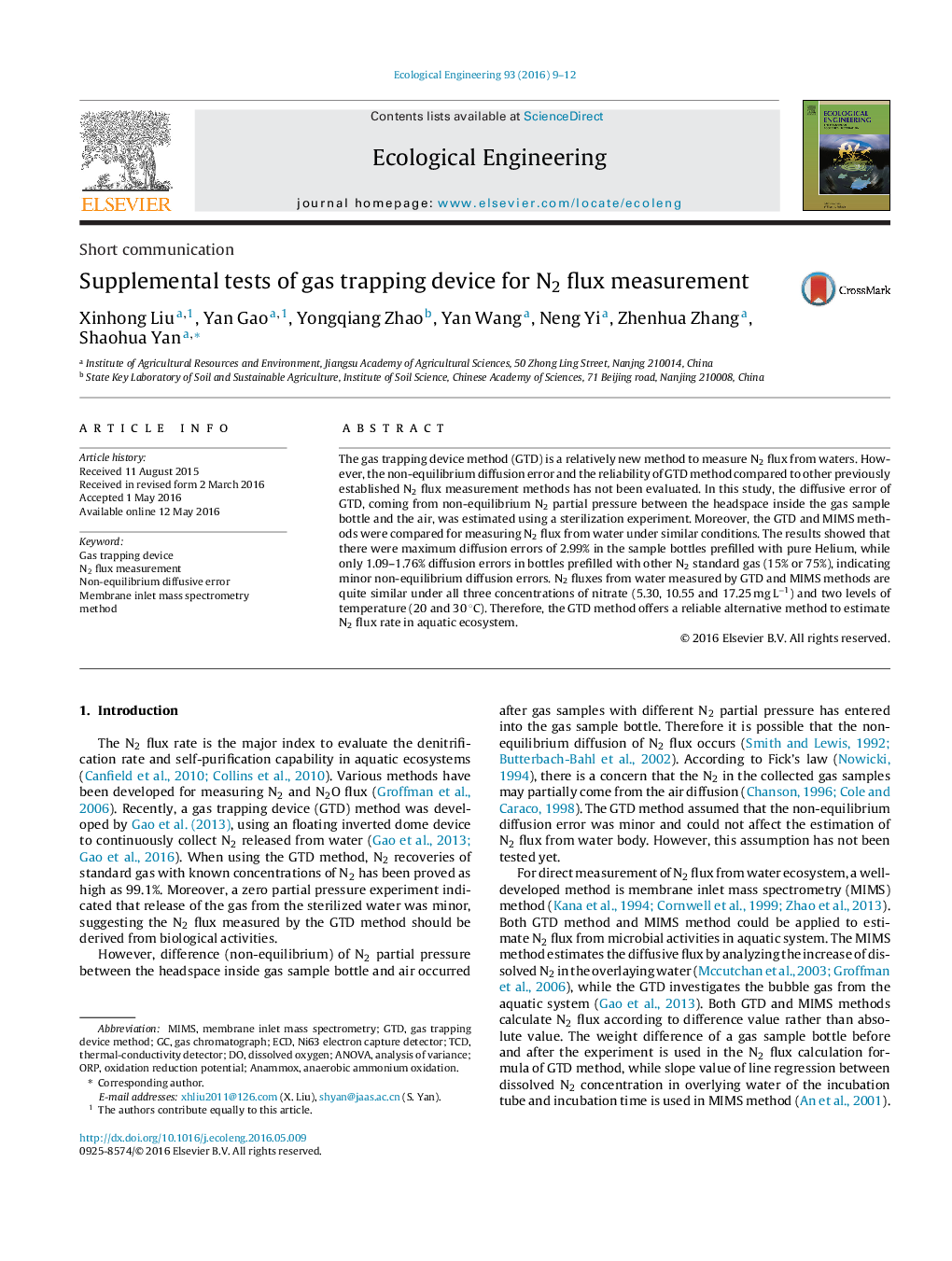| Article ID | Journal | Published Year | Pages | File Type |
|---|---|---|---|---|
| 4388706 | Ecological Engineering | 2016 | 4 Pages |
•The gas trapping device method (GTD) offers a reliable alternative method to measure N2 flux from waters.•GTD method was tested with the non-equilibrium diffusive error and compared with Membrane Inlet Mass Spectrometry method (MIMS).•There were minor non-equilibrium diffusion errors for GTD, with the maximum error of 2.99% under highest gradient difference of N2 partial pressure.•N2 fluxes obtained by GTD and MIMS methods were very similar under the same experimental condition.
The gas trapping device method (GTD) is a relatively new method to measure N2 flux from waters. However, the non-equilibrium diffusion error and the reliability of GTD method compared to other previously established N2 flux measurement methods has not been evaluated. In this study, the diffusive error of GTD, coming from non-equilibrium N2 partial pressure between the headspace inside the gas sample bottle and the air, was estimated using a sterilization experiment. Moreover, the GTD and MIMS methods were compared for measuring N2 flux from water under similar conditions. The results showed that there were maximum diffusion errors of 2.99% in the sample bottles prefilled with pure Helium, while only 1.09–1.76% diffusion errors in bottles prefilled with other N2 standard gas (15% or 75%), indicating minor non-equilibrium diffusion errors. N2 fluxes from water measured by GTD and MIMS methods are quite similar under all three concentrations of nitrate (5.30, 10.55 and 17.25 mg L−1) and two levels of temperature (20 and 30 °C). Therefore, the GTD method offers a reliable alternative method to estimate N2 flux rate in aquatic ecosystem.
